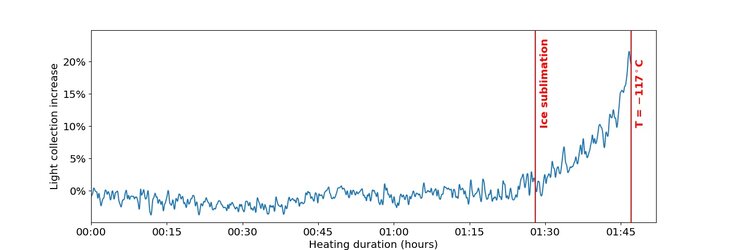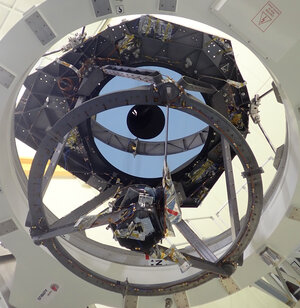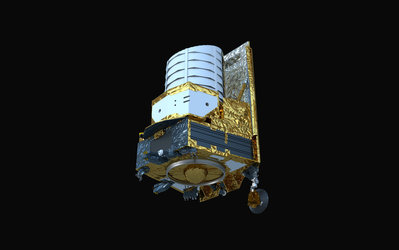Accept all cookies Accept only essential cookies See our Cookie Notice

About ESA
The European Space Agency (ESA) is Europe’s gateway to space. Its mission is to shape the development of Europe’s space capability and ensure that investment in space continues to deliver benefits to the citizens of Europe and the world.
Highlights
ESA - United space in Europe
This is ESA ESA facts Member States & Cooperating States Funding Director General Top management For Member State Delegations European vision European Space Policy ESA & EU Space Councils Responsibility & Sustainability Annual Report Calendar of meetings Corporate newsEstablishments & sites
ESA Headquarters ESA ESTEC ESA ESOC ESA ESRIN ESA EAC ESA ESAC Europe's Spaceport ESA ESEC ESA ECSAT Brussels Office Washington OfficeWorking with ESA
Business with ESA ESA Commercialisation Gateway Law at ESA Careers Cyber resilience at ESA IT at ESA Newsroom Partnerships Merchandising Licence Education Open Space Innovation Platform Integrity and Reporting Administrative Tribunal Health and SafetyMore about ESA
History ESA Historical Archives Exhibitions Publications Art & Culture ESA Merchandise Kids Diversity ESA Brand Centre ESA ChampionsSpace in Member States
Find out more about space activities in our 23 Member States, and understand how ESA works together with their national agencies, institutions and organisations.
Science & Exploration
Exploring our Solar System and unlocking the secrets of the Universe
Go to topicAstronauts
Missions
Juice Euclid Webb Solar Orbiter BepiColombo Gaia ExoMars Cheops Exoplanet missions More missionsActivities
International Space Station Orion service module Gateway Concordia Caves & Pangaea BenefitsLatest
Space Safety
Protecting life and infrastructure on Earth and in orbit
Go to topicAsteroids
Asteroids and Planetary Defence Asteroid danger explained Flyeye telescope: asteroid detection Hera mission: asteroid deflection Near-Earth Object Coordination CentreSpace junk
About space debris Space debris by the numbers Space Environment Report In space refuelling, refurbishing and removingSafety from space
Clean Space ecodesign Zero Debris Technologies Space for Earth Supporting Sustainable DevelopmentApplications
Using space to benefit citizens and meet future challenges on Earth
Go to topicObserving the Earth
Observing the Earth Future EO Copernicus Meteorology Space for our climate Satellite missionsCommercialisation
ESA Commercialisation Gateway Open Space Innovation Platform Business Incubation ESA Space SolutionsLatest
Enabling & Support
Making space accessible and developing the technologies for the future
Go to topicBuilding missions
Space Engineering and Technology Test centre Laboratories Concurrent Design Facility Preparing for the future Shaping the Future Discovery and Preparation Advanced Concepts TeamSpace transportation
Space Transportation Ariane Vega Space Rider Future space transportation Boost! Europe's Spaceport Launches from Europe's Spaceport from 2012Latest

De-icing Euclid for 20/20 vision
Thank you for liking
You have already liked this page, you can only like it once!
A special test campaign undertaken in this ESA lab well before the launch of the Agency’s Euclid mission to explore the dark Universe has helped support an important manoeuvre that the newly-launched spacecraft is currently undertaking in space.
On 4 July, as Euclid headed on to its set observing point in space, 1.5 million km from Earth, it turned in its course to face the Sun for a planned 96 hours in total.
Why does it need to do this? Mauricio Portaluppi – an ESA contamination control engineer, who has been at the launch site supporting cleanliness and contamination control of the satelllite before its launch – explains: “Euclid needs boil away any moisture that potentially might have ended up freezing on its telescope mirrors, obscuring its otherwise pristine views of the distant cosmos beyond our own Milky Way galaxy”.
Euclid’s payload module is passively cooled down to cryogenic temperatures, so any water vapour outgassed from onboard materials such as the multi-layer insulation covering the spacecraft might condense on detectors and mirrors.
“This was more than a purely theoretical concern, because a previous ESA astronomy mission, the 2013-launched Gaia mission to map the Milky Way, also had to deal with the problem of water ice on its optics early in the mission,” explains Bruno Bras, an ESA contamination control expert who also worked on the Gaia project.
“The Materials and Electrical Components Laboratory here at ESA’s ESTEC technical centre worked diligently to recreate this problem on the ground so we could fully model it. This in turn allowed the characterisation of the readings measured in orbit and supported the Gaia spacecraft team in evaluating potential decontamination options and their associated risks. In fact the Lab team ended up winning an ESA Team Excellence Award for our support to Gaia.”
Szilvia Szmolka, ESA materials test engineer, adds: “In the case of Euclid, another cryogenic astronomy mission with a similar flight profile, the aim was to get ahead of the risk in advance. Working in collaboration with the Euclid team and the wider Euclid science consortium we used representative mirror samples in our Yuta vacuum facility to predict the effects of the ice on the Euclid telescope’s optical path, and to see how much heating would be needed to clear this contamination.”
The Lab’s test campaign also amassed a extensive spectral performance database for ice contamination, right down to a single nanometre – or millionth of a millimetre – of thickness, which can be used to support future missions as well.
-
CREDIT
ESA -
LICENCE
ESA Standard Licence

First results of Euclid de-icing campaign

Eye of Euclid

Euclid logo

Euclid















 Germany
Germany
 Austria
Austria
 Belgium
Belgium
 Denmark
Denmark
 Spain
Spain
 Estonia
Estonia
 Finland
Finland
 France
France
 Greece
Greece
 Hungary
Hungary
 Ireland
Ireland
 Italy
Italy
 Luxembourg
Luxembourg
 Norway
Norway
 The Netherlands
The Netherlands
 Poland
Poland
 Portugal
Portugal
 Czechia
Czechia
 Romania
Romania
 United Kingdom
United Kingdom
 Slovenia
Slovenia
 Sweden
Sweden
 Switzerland
Switzerland

























